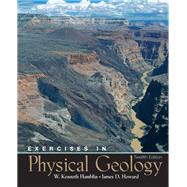
Note: Supplemental materials are not guaranteed with Rental or Used book purchases.
Purchase Benefits
What is included with this book?
| Preface | p. 4 |
| Minerals and Crystal Growth | p. 6 |
| Mineral Identification | p. 10 |
| Igneous Rocks | p. 24 |
| Sedimentary Rocks | p. 41 |
| Metamorphic Rocks | p. 57 |
| Geologic Time--Relative Dating | p. 68 |
| Maps and Aerial Photos | p. 72 |
| Landforms of the United States | p. 90 |
| Stream Erosion and Deposition | p. 95 |
| Mass Movement | p. 112 |
| Groundwater | p. 116 |
| Valley Glaciation | p. 125 |
| Continental Glaciation | p. 134 |
| Shoreline Processes | p. 142 |
| Eolian Processes | p. 156 |
| Structural Geology | p. 162 |
| Seismology | p. 190 |
| Plate Tectonics | p. 196 |
| Divergent Plate Boundaries | p. 206 |
| Transform Plate Boundaries | p. 219 |
| Convergent Boundaries | p. 227 |
| Plumes and Hotspots | p. 238 |
| Planetary Geology | p. 247 |
| Table of Contents provided by Syndetics. All Rights Reserved. |
The New copy of this book will include any supplemental materials advertised. Please check the title of the book to determine if it should include any access cards, study guides, lab manuals, CDs, etc.
The Used, Rental and eBook copies of this book are not guaranteed to include any supplemental materials. Typically, only the book itself is included. This is true even if the title states it includes any access cards, study guides, lab manuals, CDs, etc.